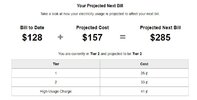Yes that is basically true. As mentioned above.
Note that for “reasons” the rated line is 5Wh/mi higher than the actual charging constant.
And because of the buffer you have to be 4.5% lower than that constant for mile-for-mile rolloff.
And because of heat losses you have to be about 1% lower than that as measured on the trip meter.
So for the non-P Model Y take 77.8kWh or so and divide by the rated miles on the Tesla website (whatever the true adjusted max rated range is for the vehicle). That will give you the charging constant.
When the vehicle is new and the energy exceeds the degradation threshold, you’ll be able to use a little more per mile and still achieve parity, since the rated mile energy content will be slightly inflated. (For example you might have 78.5kWh at 100% rather than 77.8kWh, in which case your rated miles will have 1% more energy than later in life, to hide initial capacity loss.)
So for Model Y with 77.8kWh battery with rated range of 326mi initially the constant is about 239Wh/mi. Line on energy screen is probably about 244Wh/mi.
And if you show some rated range loss, you need to get about 226Wh/mi on the trip meter for mile-for-rated-mile “parity.”



